Smart Home Smoke Sensors & Alarms Project
This project aims to take a dumb smoke alarm or smoke detector/sensor and to connect them to my smart home, to make it incredibly smart. There are many reasons why you would want to do this instead of buying expensive "smart" smoke alarms but I'm not going to cover that here. You can read about my research and thinking but this project is going to focus on how I've done this. The same can be done with heat sensors and carbn monoxide sensors. Most of these sensors are consumable items (they have a limited lifetime), so packing them with expensive electronics (which may well make the obsolete much quicker) just doesn't make sense.
Regulations
I'm not modifying these smoke alarms and detectors but, simply connecting them up as intended. By connecting them all up to my smart home they are also all linked together. My approach also removes the need for batteries and uses a protected 12V power supply.
Sensors
For this project, I'm using 'off the shelf', 12V dc smoke detectors/sensors and smoke alarms. A smoke detector/sensor is just a smoke sensor and does not have an in-built sounder and is designed to be connected to an alarm panel. I use these when I don't want a local sounder in the zone/room and I want my smart home's alarm to make us aware that it has been triggered.
I'm using 12V dc smoke alarms/detectors because this is a standard voltage used and they work very reliably over very long cable runs, using standard 4-core or 6-core alarm cable. The currents involved are very low, so there is no noticable voltage drop.
ESP (PSD212) 12V Optical Smoke Detector

I use this smoke detector because it is a low-cost (approximately £20), compact, low-profile device that looks really good. It's a smoke detector, so it doesn't make any noise when triggered. It does have a nice, subtle visual indicator though.
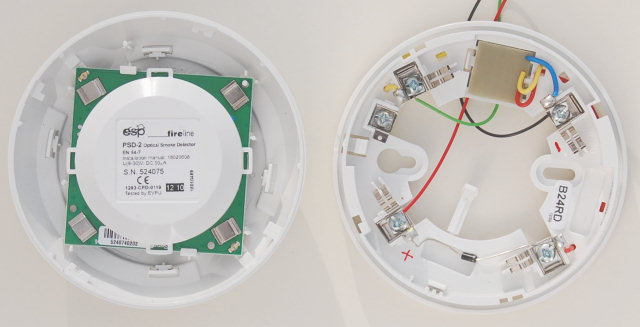
The smoke detector comes in two parts, a mounting base and the main detector unit. This means it is possible to install it and just replace the detector unit, when the time comes. It is simply pushed into the base and rotated slightly to lock it in place. There are also some guide markers to ensure it is aligned correctly.
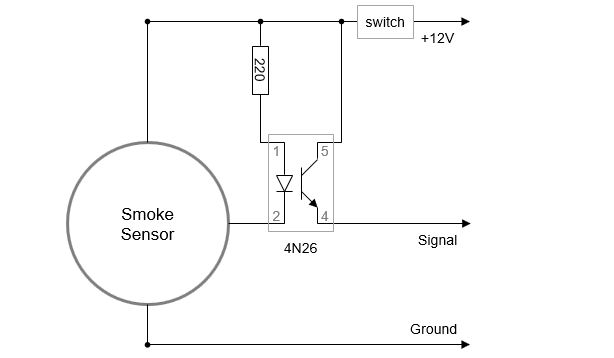
It is designed to connect to a standard alarm panel and works by drawing more current when triggered (29mA) than it uses in standby (less than 50uA). I use this change to operate an opto-isolator, which can then be easily interfaced as a digital device to my smart home (or many other things). It exposes three terminals and I have connected my wiring to them: +12V (red), ground (black) and signal (blue).
A momentary switch is placed in-line with the power line, to allow manual reset. This detector will not automatically reset itself.
Aico Ei EI100R Ionisation Smoke Alarm
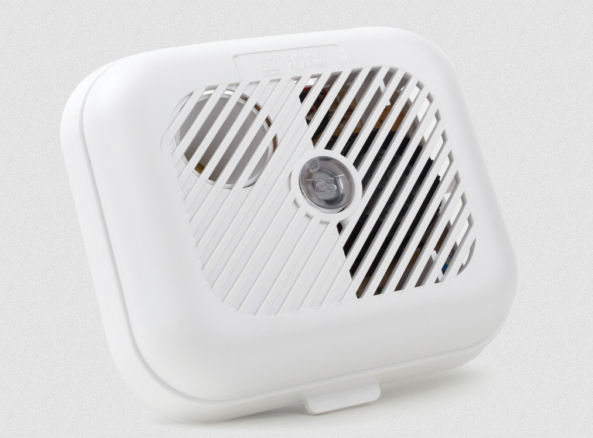
I use Aico Ei EI100R unit in places where I want a local sounder and typically it is not visible (e.g. loft, garage, shed, etc.).
This smoke alarm carries the BSI Kitemark to indicate type testing to BS EN14604:2005 and comes with a 5-year guarantee. It is easy to inteface to things because it provides both normally closed and normally open relay contacts. The unit has a built in sounder giving a minimum sound output of 85dB(A) at 3m. Frequency range 2200/2800Hz.
Interfacing
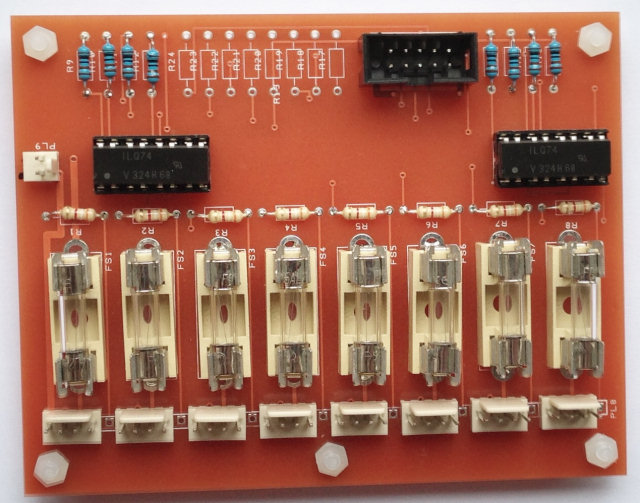
I typically connect sensors like this to my contextual smart home using an 8-channel optical input board, which then connects to an Arduino. This makes the whole process very quick and very reliable.
This board features individual fuses, to ensure one faulty sensor will not take out the supply to the other seven. It's overkill but I consider it essential for safety and security related equipment.
Software
I use Arduino processors to connect many things to my contextual smart home and they send encrypted using a unified communications protocol. With smoke sensors, I only report changes of state and don't enforce regular updates.
My smart home models smoke detectors/alarms as objects with a type 'Smoke'. It models which zones they are located in and can therefore deliver informative voice announcements and notifications, as well as triggering our smart home's alarm.
Examples
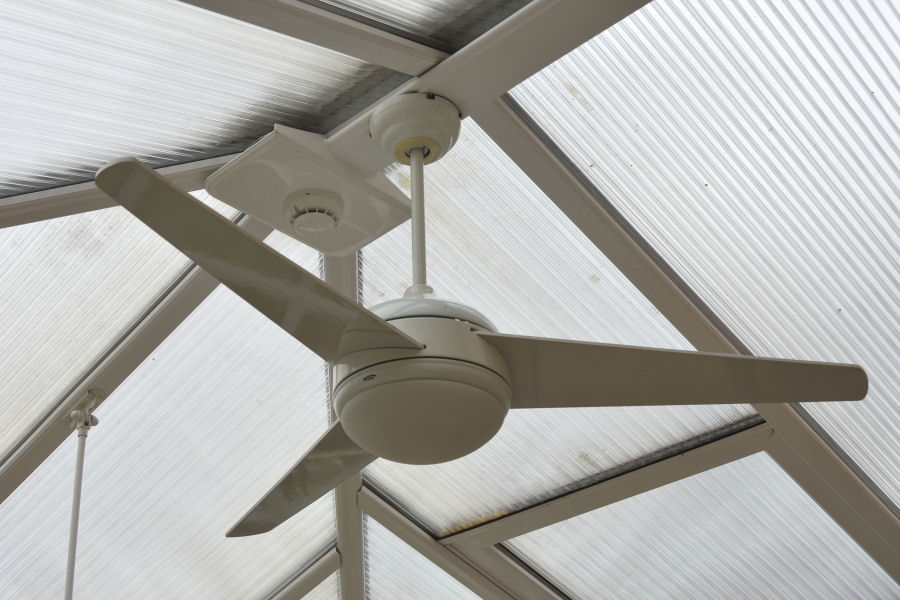
The ESP smoke sensor in our conservatory is compact and white, so it blends into the white uPVC well. The wiring is all hidden out of sight.
My contextual smart home makes an informative voice announcements when any smoke sensor is triggered, before the alarm system is activated.
Summary
I don't have and have never bought any "smart" smoke alarms. I can do a better job, for a lot less money, by using dumb sensors connected to my smart home. This means I can afford more of them, making my home safer. I also get a much better user experience. When a sensor does eventually expire, they can easily and cheaply be swapped out without any reconfiguration required.



